Grow Cucumbers at Home? Absolutely! Imagine biting into a crisp, refreshing cucumber you nurtured from seed to salad, right in your own backyard. There’s something incredibly satisfying about growing your own food, and cucumbers are surprisingly easy to cultivate with a few simple tricks.
For centuries, cucumbers have been a staple in diets across the globe. Originating in India, they’ve been enjoyed by everyone from ancient emperors to modern-day gardeners. Their versatility and refreshing taste have made them a beloved vegetable (though technically a fruit!) in countless cuisines.
But why should you learn to grow cucumbers at home? Well, store-bought cucumbers often lack the vibrant flavor and satisfying crunch of homegrown varieties. Plus, you have complete control over what goes into your garden, ensuring you’re enjoying pesticide-free, healthy produce. In this article, I’m going to share some of my favorite DIY tricks and hacks to help you achieve a bountiful cucumber harvest, even if you’re a complete beginner. Get ready to transform your garden into a cucumber paradise!
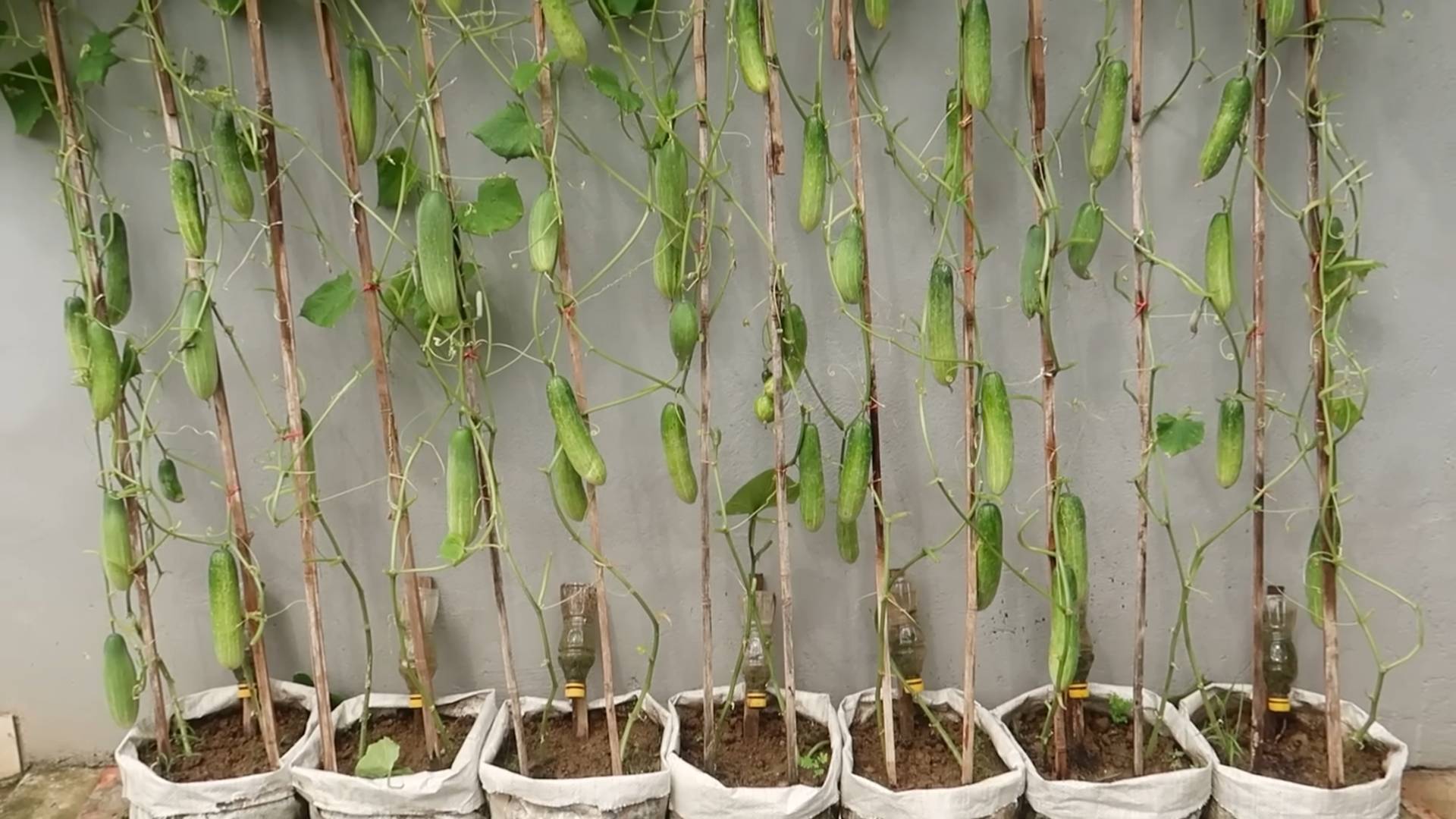
Grow Your Own Delicious Cucumbers: A Beginner’s Guide
Hey there, fellow gardening enthusiasts! I’m so excited to share my tried-and-true method for growing cucumbers right in your own backyard (or even on your balcony!). Nothing beats the taste of a freshly picked, crisp cucumber, and trust me, it’s easier than you think. Let’s dive in!
Choosing the Right Cucumber Variety
Before we get our hands dirty, let’s talk about cucumber varieties. There are a few main types, and the best one for you depends on your space and what you plan to do with your cucumbers.
* Slicing Cucumbers: These are your classic, long, smooth-skinned cucumbers perfect for salads and sandwiches. Think ‘Marketmore’ or ‘Straight Eight’.
* Pickling Cucumbers: Shorter and stubbier with bumpy skin, these are ideal for making pickles. ‘National Pickling’ and ‘Boston Pickling’ are popular choices.
* Bush Cucumbers: If you’re short on space, bush varieties are your best friend. They grow in a compact form, making them great for containers. ‘Bush Champion’ and ‘Spacemaster’ are good options.
* Gherkin Cucumbers: These are tiny cucumbers, often used for pickling whole.
I personally love growing ‘Marketmore’ for salads and ‘National Pickling’ for, well, pickles! Consider your needs and space when making your choice.
Preparing for Planting
Okay, now that we’ve picked our variety, let’s get ready to plant! Cucumbers are warm-weather lovers, so timing is key.
* Timing: Wait until the danger of frost has passed and the soil has warmed up to at least 60°F (15°C). I usually aim for late spring or early summer.
* Sunlight: Cucumbers need at least 6-8 hours of sunlight per day. Choose a sunny spot in your garden.
* Soil: Cucumbers thrive in well-drained, fertile soil. Amend your soil with compost or well-rotted manure to improve its fertility and drainage. I always add a generous amount of compost – it makes a huge difference!
* Support: Most cucumber varieties benefit from support, like a trellis or fence. This helps keep the fruits off the ground, preventing rot and making harvesting easier. Vining varieties need this support. Bush varieties can do without, but it can still help with air circulation.
Planting Your Cucumber Seeds or Seedlings
You can start cucumbers from seed indoors or directly sow them in the garden. I usually prefer direct sowing because cucumbers don’t always transplant well.
Direct Sowing (My Preferred Method)
1. Prepare the Soil: Rake the soil smooth and remove any rocks or debris.
2. Create Mounds or Rows: You can plant cucumbers in mounds or rows. For mounds, create small hills about 12 inches in diameter and 3-4 feet apart. For rows, space them about 3-4 feet apart.
3. Sow the Seeds: Plant 2-3 seeds per mound or every 6-12 inches in rows, about 1 inch deep.
4. Water Gently: Water the soil gently to avoid disturbing the seeds.
5. Thin Seedlings: Once the seedlings emerge and have a few true leaves, thin them to the strongest plant per mound or every 12 inches in rows.
Starting Seeds Indoors (If You Must!)
1. Use Biodegradable Pots: Because cucumbers don’t love being transplanted, using biodegradable pots will minimize root disturbance.
2. Sow Seeds: Plant 2-3 seeds per pot, about 1 inch deep.
3. Provide Warmth and Light: Keep the pots in a warm place (around 70-80°F or 21-27°C) and provide plenty of light. A sunny windowsill or grow lights will work.
4. Water Regularly: Keep the soil moist but not soggy.
5. Harden Off Seedlings: Before transplanting, gradually acclimate the seedlings to outdoor conditions by exposing them to increasing amounts of sunlight and wind over a week.
6. Transplant Carefully: Plant the seedlings in the garden, biodegradable pot and all, after the danger of frost has passed. Space them according to the variety’s recommendations.
Caring for Your Cucumber Plants
Now comes the fun part – watching your cucumbers grow! Here’s what you need to do to keep them happy and healthy:
* Watering: Cucumbers need consistent moisture, especially during hot weather. Water deeply and regularly, aiming for about 1 inch of water per week. Avoid overhead watering, as this can lead to fungal diseases. Drip irrigation or soaker hoses are ideal. I usually water early in the morning to allow the foliage to dry before nightfall.
* Fertilizing: Feed your cucumber plants with a balanced fertilizer every 2-3 weeks. You can also use compost tea or fish emulsion. I like to use a fertilizer that’s higher in potassium, as this promotes fruit production.
* Weeding: Keep the area around your cucumber plants free of weeds, which can compete for nutrients and water. Mulching with straw or wood chips can help suppress weeds and retain moisture.
* Pest Control: Keep an eye out for common cucumber pests like aphids, cucumber beetles, and squash bugs. Handpicking pests, using insecticidal soap, or introducing beneficial insects like ladybugs can help control infestations. I always check my plants regularly for any signs of trouble.
* Disease Prevention: Cucumbers are susceptible to fungal diseases like powdery mildew and downy mildew. To prevent these diseases, ensure good air circulation, avoid overhead watering, and apply a fungicide if necessary.
* Training: If you’re growing vining cucumbers, train them to climb the trellis or fence. Gently guide the vines and secure them with plant ties if needed.
Harvesting Your Cucumbers
The moment we’ve all been waiting for – harvesting!
* Timing: Harvest cucumbers when they are the desired size and color. Slicing cucumbers are usually ready when they are 6-8 inches long and dark green. Pickling cucumbers are harvested when they are 2-4 inches long.
* Technique: Use a sharp knife or pruning shears to cut the cucumber from the vine, leaving a short stem attached.
* Regular Harvesting: Harvest cucumbers regularly to encourage continued production. Overripe cucumbers can become bitter and slow down the plant’s growth.
Dealing with Common Cucumber Problems
Even with the best care, you might encounter some problems along the way. Here are a few common issues and how to address them:
* Yellowing Leaves: This can be caused by overwatering, underwatering, nutrient deficiencies, or disease. Check the soil moisture, fertilize if needed, and treat any diseases promptly.
* Bitter Cucumbers: Bitterness can be caused by stress, such as inconsistent watering, high temperatures, or nutrient deficiencies. Provide consistent moisture, shade the plants during the hottest part of the day, and fertilize regularly.
* Misshapen Cucumbers: This can be caused by poor pollination or nutrient deficiencies. Ensure adequate pollination by attracting pollinators to your garden and fertilize with a balanced fertilizer.
* Lack of Fruit Production: This can be caused by poor pollination, nutrient deficiencies, or stress. Hand-pollinate the flowers if necessary, fertilize regularly, and provide consistent moisture.
Enjoying Your Homegrown Cucumbers
Congratulations, you’ve successfully grown your own cucumbers! Now it’s time to enjoy the fruits (or rather, vegetables) of your labor.
* Salads: Slice them up and add them to your favorite salads.
* Sandwiches: Use them as a refreshing topping for sandwiches and wraps.
* Pickles: Make your own homemade pickles.
* Cucumber Water: Infuse water with cucumber slices for a refreshing and hydrating drink.
* Gazpacho: Use them as a key ingredient in this cold Spanish soup.
I hope this guide has inspired you to grow your own cucumbers. It’s a rewarding experience, and you’ll be amazed at how much better homegrown cucumbers taste compared to store-bought ones. Happy gardening!
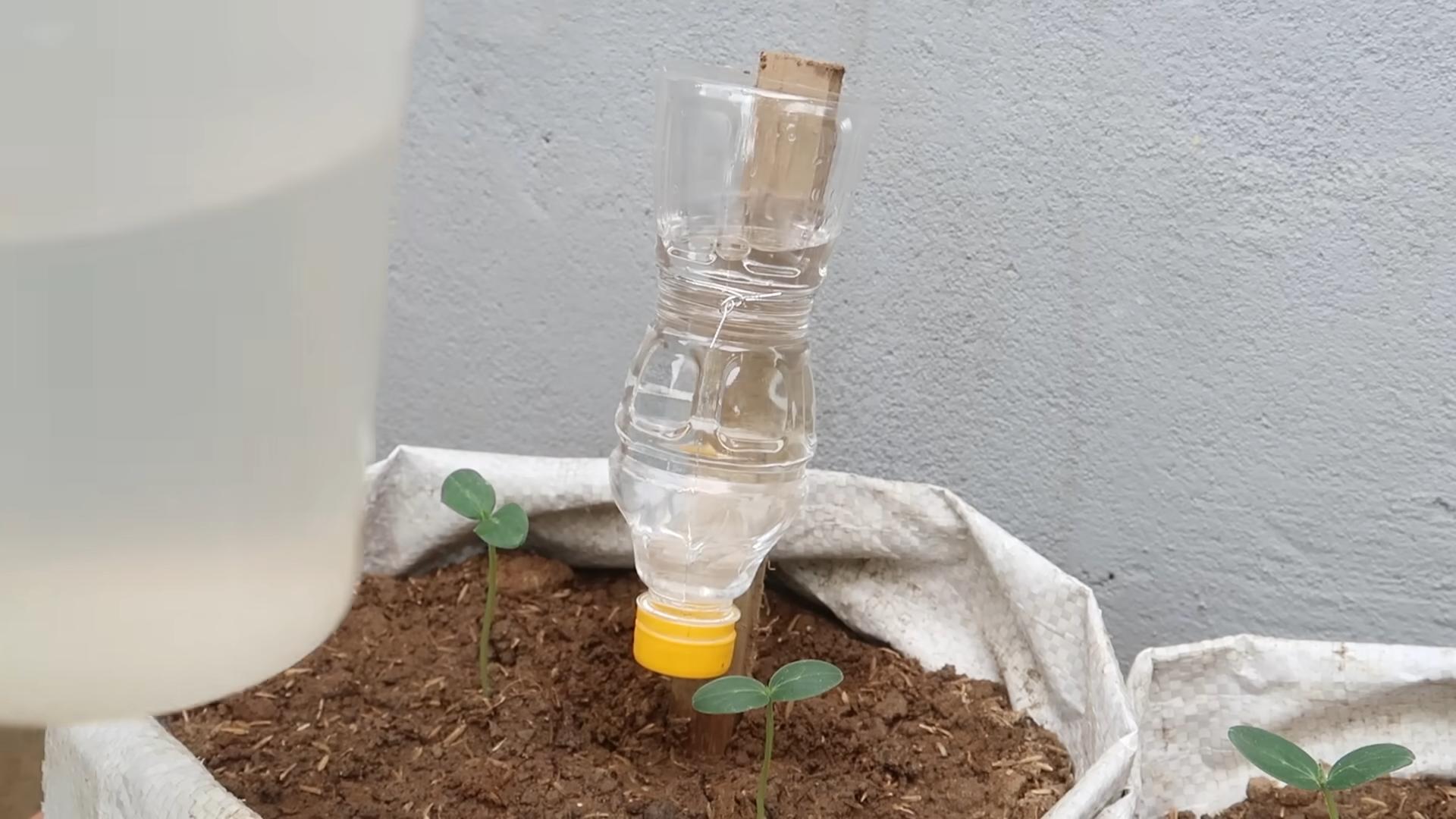
Conclusion
So, there you have it! Growing cucumbers at home, especially with our simple DIY trick, is not just a gardening project; it’s an investment in fresh, flavorful produce and a rewarding connection with nature. We’ve shown you how to bypass common pitfalls and maximize your yield, ensuring a bountiful harvest of crisp, delicious cucumbers right from your own backyard or balcony.
Why is this DIY approach a must-try? Because it simplifies the process, making it accessible even to novice gardeners. It addresses key challenges like space constraints, soil quality, and pest control with practical, cost-effective solutions. Imagine the satisfaction of biting into a cucumber you nurtured from seed, knowing exactly what went into its growth – no hidden pesticides, no mysterious additives, just pure, homegrown goodness.
But the beauty of gardening lies in its adaptability. Feel free to experiment with different cucumber varieties. Bush cucumbers are fantastic for containers, while vining varieties can be trained up trellises for vertical gardening. Consider adding companion plants like marigolds or basil to deter pests and attract beneficial insects. You could even try pickling your homegrown cucumbers for a tangy treat that lasts throughout the year! For a spicier kick, try adding a few jalapeno slices to your pickling brine. If you’re feeling adventurous, explore different trellising methods – a simple A-frame, a repurposed pallet, or even a decorative archway can add visual appeal to your garden while supporting your cucumber vines.
The key takeaway is that growing cucumbers at home is easier than you think. Our DIY trick provides a solid foundation, but don’t be afraid to personalize the process to suit your specific needs and preferences. Whether you’re a seasoned gardener or just starting out, we encourage you to give it a try.
We’re confident that you’ll be amazed by the results. Picture yourself enjoying fresh cucumber salads, adding slices to your water for a refreshing twist, or even gifting your surplus harvest to friends and neighbors. The possibilities are endless!
So, grab your seeds, gather your supplies, and get ready to embark on a cucumber-growing adventure. We can’t wait to hear about your experiences! Share your photos, tips, and triumphs in the comments below. Let’s build a community of cucumber enthusiasts and inspire others to discover the joy of homegrown produce. Let us know what worked for you, what challenges you faced, and any modifications you made to our DIY trick. Your feedback is invaluable and will help us refine our methods and empower even more people to grow their own food. Happy gardening!
Frequently Asked Questions (FAQ)
What are the best cucumber varieties to grow at home?
Choosing the right cucumber variety is crucial for success. For beginners, we recommend bush varieties like ‘Spacemaster’ or ‘Bush Champion’ as they are compact and well-suited for containers. If you have more space and prefer vining cucumbers, consider ‘Marketmore 76’ or ‘Straight Eight’ for slicing, or ‘National Pickling’ for pickling. English cucumbers, like ‘Burpless Tasty Green,’ are also popular for their thin skin and mild flavor. Consider your local climate and growing conditions when making your selection. Look for varieties that are disease-resistant and well-adapted to your region.
How much sunlight do cucumbers need?
Cucumbers are sun-loving plants and require at least 6-8 hours of direct sunlight per day to thrive. Insufficient sunlight can lead to stunted growth, reduced yields, and increased susceptibility to diseases. Choose a location in your garden that receives ample sunlight throughout the day. If you’re growing cucumbers in containers, make sure to position them in a sunny spot. If you live in a particularly hot climate, providing some afternoon shade can help prevent the plants from overheating.
What kind of soil is best for growing cucumbers?
Cucumbers prefer well-drained, fertile soil that is rich in organic matter. The ideal soil pH is between 6.0 and 7.0. Before planting, amend your soil with compost, aged manure, or other organic materials to improve its structure and fertility. If you’re growing cucumbers in containers, use a high-quality potting mix that is specifically formulated for vegetables. Avoid using garden soil in containers, as it can become compacted and poorly drained.
How often should I water my cucumber plants?
Cucumbers need consistent moisture to produce healthy fruits. Water deeply and regularly, especially during hot, dry weather. Aim to keep the soil consistently moist but not waterlogged. A good rule of thumb is to water when the top inch of soil feels dry to the touch. Mulching around the plants can help retain moisture and suppress weeds. Drip irrigation or soaker hoses are excellent options for delivering water directly to the roots, minimizing water loss and reducing the risk of foliar diseases.
How do I prevent pests and diseases from affecting my cucumber plants?
Pest and disease prevention is essential for a successful cucumber harvest. Regularly inspect your plants for signs of pests or diseases. Common cucumber pests include aphids, cucumber beetles, and squash bugs. You can control these pests with insecticidal soap, neem oil, or by handpicking them off the plants. Common cucumber diseases include powdery mildew, downy mildew, and bacterial wilt. To prevent these diseases, ensure good air circulation around the plants, avoid overhead watering, and choose disease-resistant varieties. Crop rotation can also help prevent soilborne diseases.
When should I harvest my cucumbers?
Harvest cucumbers when they are the desired size and color for the variety you are growing. Overripe cucumbers can become bitter and seedy. Regularly check your plants for ripe cucumbers and harvest them promptly to encourage continued production. Use a sharp knife or pruning shears to cut the cucumbers from the vine, leaving a short stem attached.
Can I grow cucumbers indoors?
Yes, you can grow cucumbers indoors, but it requires some extra effort. Choose a compact, bush variety and provide adequate light, either with a sunny window or grow lights. Ensure good air circulation and pollinate the flowers by hand using a small paintbrush. Indoor cucumbers may require more frequent watering and fertilization than outdoor plants.
What is the DIY trick mentioned in the article?
The DIY trick refers to a simplified method for growing cucumbers at home, focusing on optimizing space, soil, and pest control. While the specific details may vary depending on the article’s main content, it generally involves using containers or raised beds, amending the soil with organic matter, and implementing preventative measures against pests and diseases. The core idea is to make cucumber growing accessible and successful for gardeners of all skill levels.
How do I encourage pollination for my cucumber plants?
Cucumbers need pollination to produce fruit. If you’re growing cucumbers outdoors, bees and other pollinators will usually take care of this. However, if you’re growing cucumbers indoors or if pollinator activity is low in your area, you may need to hand-pollinate the flowers. To do this, use a small paintbrush to transfer pollen from the male flowers (which have a long, thin stem) to the female flowers (which have a small cucumber-like structure at the base).
What are some companion plants for cucumbers?
Companion planting can benefit cucumbers by attracting beneficial insects, repelling pests, and improving soil health. Good companion plants for cucumbers include marigolds, basil, dill, nasturtiums, and radishes. Avoid planting cucumbers near aromatic herbs like sage, as they can inhibit growth.

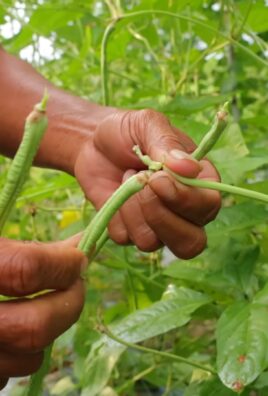
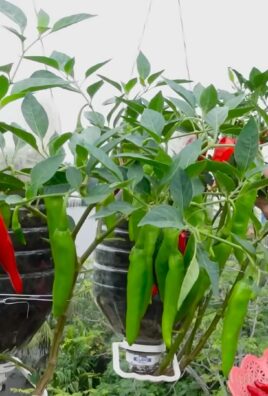
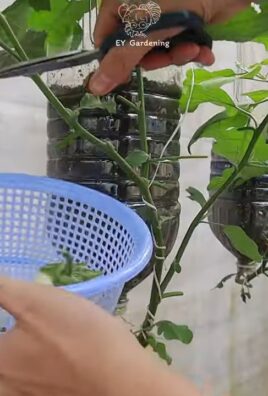
Leave a Comment